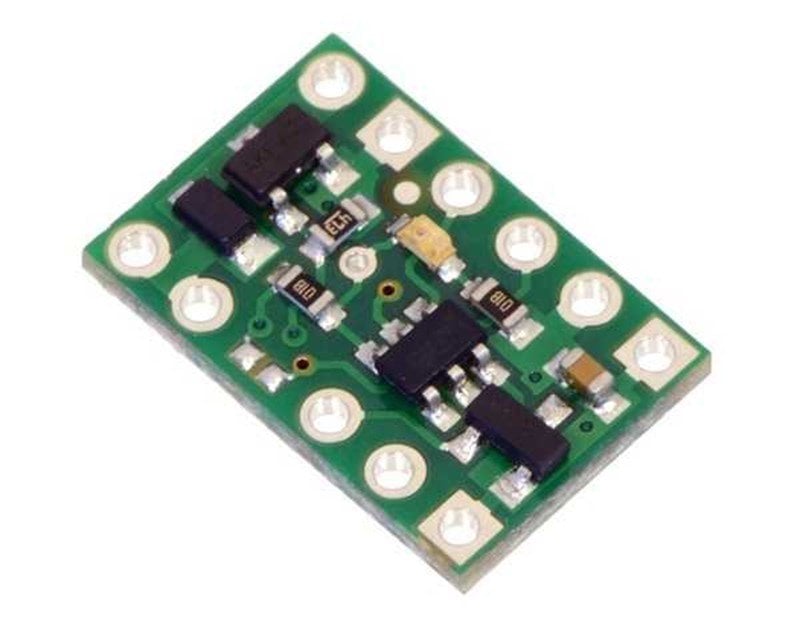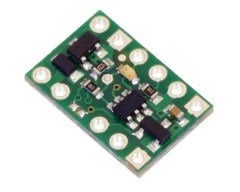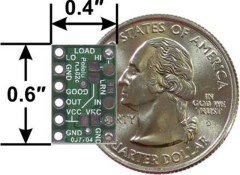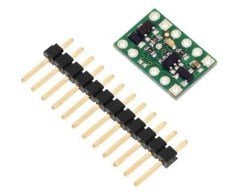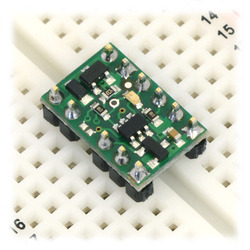The board requires a 2.5–5.5 V power source supplied to VCC. The board’s MOSFET can deliver up to around 3 A with VCC at 5 V and can handle load supply voltages up to 30 V.
The RC switch measures the width of incoming RC pulses and compares it to a user-configurable threshold (with ±64 µs of hysteresis) to decide whether to turn on the MOSFET. By default, the threshold is approximately 1700 µs, with switch activation occurring above the threshold (longer pulses), but the switch has a learning mode that allows you to change the threshold and the activation direction. A safe-start feature reduces the likelihood of unexpected activation.
This compact unit measures 0.4″ × 0.6″ and weighs just over 0.5 g (0.02 oz) without the included header pins.
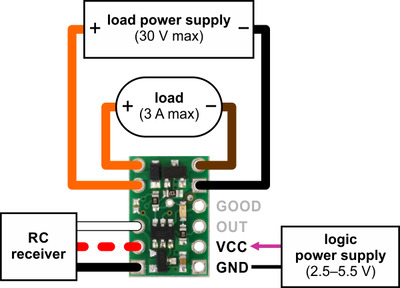 |
Pololu RC Switch with Small Low-Side MOSFET, typical wiring diagram. |
|---|
Outputs and indicator LED
The RC switch provides feedback about what state it is in via a yellow indicator LED. Status information is also provided on two output pins:
More information about using the Pololu RC switch with Small Low-Side MOSFET can be found in the user’s guide.
Included hardware
A 12-pin 0.1″ straight breakaway male header is included with the Pololu RC Switch with Small Low-Side MOSFET. The header pins can be used to connect the RC switch to perfboards or breadboards.
|
|
Other RC switches
We offer an RC switch with a digital output for applications that just require a low-current digital signal and an RC switch with a medium MOSFET that can switch more current and has an integrated regulator. We also offer an RC switch with a relay that can be used to control electrically isolated loads.
This product replaces item #1210. (For most applications, it can be considered a drop-in replacement for #1210.)

